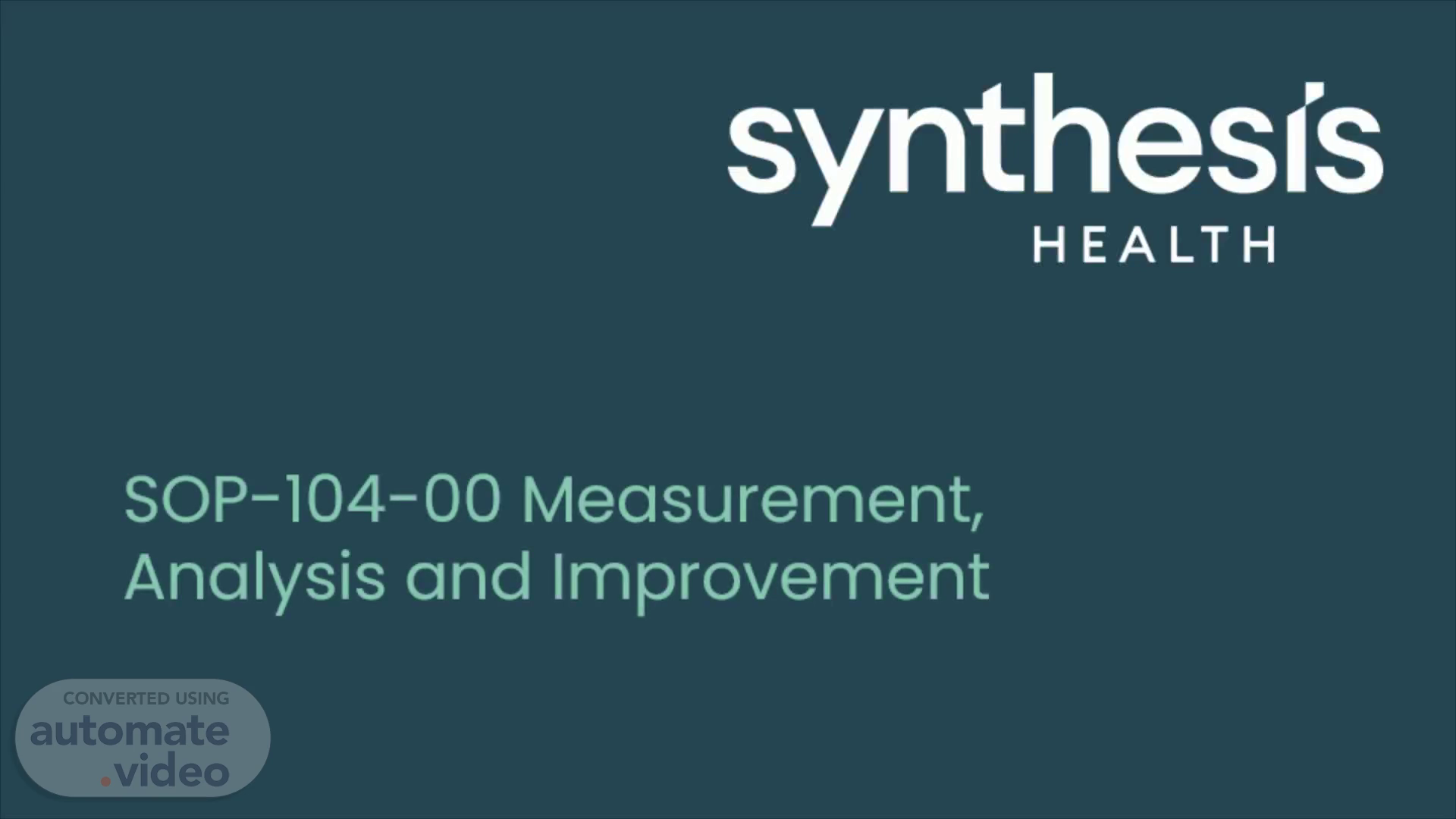
SOP-104-00 Measurement, Analysis and Improvement
Scene 1 (0s)
[Audio] Hello, Today we are presenting the changes on SOP- 104- 00 Measurement Analysis and Improvement procedure revision 3.0.
Scene 2 (11s)
[Audio] We will start by giving a brief introduction of the change and then detail the changes implemented..
Scene 3 (19s)
[Audio] The need of procedure change emerged as the quality department found the need to standardized the risk-based approach of internal QMS procedures such as Corrective Action Preventive Action, Software Tool validation, Supplier Management, amongst others, to ensure a common practice on how to assess risk management. Similarly, a Quality Plan QP- 2022- 007 QMS Risk Classification, has been opened to aid on the same need..
Scene 4 (48s)
[Audio] As an implementation action, it is decided to include the process failure mode and effect analysis within the scope of SOP- 104- 00 Measurement Analysis and Improvement, which will be referred as the standard practice for other QMS SOPs..
Scene 5 (1m 5s)
[Audio] Process Failure Mode & Effect Analysis ( pFMEA) is a method for the systematic analysis of risks resulting from failure modes in processes which consist in: Identification of process failure(s) determination of the process failure risk levels establishment of process control measures to reduce process failures to an acceptable level..
Scene 6 (1m 32s)
[Audio] To aid on identifying process failures, the designated representative, meaning, the person responsible of performing the pFMEA, should consider: Medical device safety and efficacy risks: This includes direct harm to patients and users, and indirect harm when software controlling manufacturing or quality of the device malfunctions, resulting in failure of the device, which causes harm. Manufacturing process and or manufacturing personnel risks. Environmental risks: This includes the environment in which the software operates (i.e., both physical and virtual). Regulatory and quality system compliance risks: Which identifies risks of non-compliance with regulatory requirements to be considered if the software can lead to loss of records (e.g. CAPA, complaint, device master record, design history file, device history records) required by regulatory agencies or deviations from the current quality system, and.
Scene 7 (2m 40s)
[Audio] The next step is to establish the risk level of the process failure, which includes three components: Probability of Failure Effect of Failure, and Probability of Detectionall which will be detailed individually.Probability of failure determines the probability of occurrence of a process failure and it is estimated using expert judgement and the following qualitative criteria. Frequent, with a score of 5, the process failure is almost inevitableProbable, with a score of 4, determines that more than 2 incidents in the last 6 months or more than 5 incidents in the past 2 years have occurred for the specific process failureOccasional, with a score of 3, determines that no more than 5 incidents in the past 2 years have occurred for the specific process failureRemote, with a score of 2, determines that no more than 2 incidents in the past 2 years have occurred for the specific process failureImprobable, with a score of 1, determines that the process failure is unlikely to happen.
Scene 8 (3m 43s)
[Audio] The second component of establishing the process failure is the effect of the failure, also known as severity, which determines the severity of the process failure to medical devices and or systems. The Effect of Failure is determined using the following criteria: 1. Critical, with a score of 5,.
Scene 9 (4m 6s)
4. Probability of Detection. The probability of detection assesses the probability of detecting the identified process failures using the following qualitative criteria: Probability of Detection Almost Certain High Chance Moderate Chance Remote Chance Absolute Uncertainty Criteria Current QMS controls almost certain to detect or prevent the potential failure. High chance the current QMS controls the current controls will detect or prevent the potential failure Moderate chance the current QMS controls will detect or prevent the potential failure Low chance that the current QMS controls will detect or prevent the potential failure Current QMS controls cannot detect or prevent the potential failure.
Scene 10 (4m 29s)
4. Process Failure Risk Level. Probability of Detection Moderate High Chance 15-19 Probability of Failure * Effect failure 10-14 5-9 Almost Certain MEDIUM LOW LOW LOW LOW MEDIUM MEDIUM MEDIUM LOW LOW Chance HIGH HIGH MEDIUM MEDIUM LOW Remote Chance HIGH HIGH HIGH MEDIUM MEDIUM Absolute Uncertainty HIGH HIGH HIGH HIGH MEDIUM.
Scene 11 (4m 59s)
4. Acceptability Criteria. The process failure risk acceptability criteria is determined as indicated in the table below: Process Failure Risk Level HIGH MEDIUM LOW Acceptability Criteria Process failure risk level is Unacceptable. Additional Process Control Measures are required to either (1) reduce the probability of failure times the effect of failure or (2) increase detectability to an acceptable level. Process failure risk level is Acceptable when additional Process Control Measures to I either (1) reduce the probability of failure times the effect of failure or (2) increase detectability. Process failure risk level is Acceptable. No additional process control measures are needed..
Scene 12 (5m 23s)
4. Probability of Detection. Process Control Measures (PCMs) will be implemented to reduce process failure risk level to an acceptable level. When a process control measure is identified in an individual data source, additional data sources and other available information will be reviewed, as appropriate, including information from external sources. Where appropriate, statistical methods will be used to perform analysis of data to establish, control, and verify the acceptability of process capability and product characteristics. If used, sampling plans will be documented and based on a valid statistical rationale.
Scene 13 (5m 48s)
Thank You!.